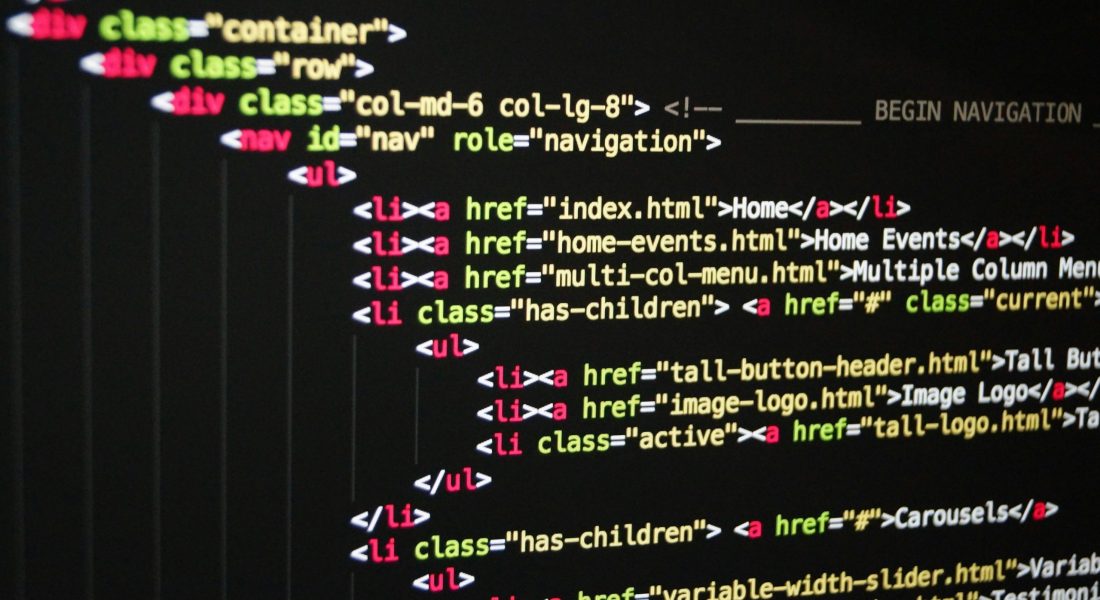When diving into machine learning or AI projects, one of the most time-consuming yet essential tasks is data annotation. Whether you’re labeling images, videos, or text, choosing the right tool for the job can make a huge difference. The best annotation tools not only help speed up the process but also ensure your labeled data is accurate and ready for model training. In this article, we’ll dive into some of the best tools out there that can help make your annotation tasks simpler and more efficient.

1. FlyPix AI
At FlyPix AI, we’ve created a platform that simplifies geospatial analysis by using artificial intelligence to convert satellite and aerial imagery into actionable data. This tool helps us detect objects, monitor changes, and identify anomalies, making it an excellent choice for industries that need detailed analysis of Earth’s surface – think agriculture, urban planning, and environmental monitoring. When we need to annotate geospatial data, FlyPix AI is one of the best annotation tools we rely on, offering a user-friendly, no-code interface that streamlines the process.
What really sets FlyPix AI apart is its versatility. It supports various types of imagery, including drone, satellite, LiDAR, and hyperspectral data, allowing us to annotate and analyze complex datasets across different industries. Plus, with its real-time analytics and interactive features, we can track changes over time, generate heatmaps, and export data – all within one platform. It’s a robust tool that gives us everything needed to annotate and analyze data efficiently, making it a go-to option for teams working with geospatial data.
Key Features:
- No-code platform for object detection, segmentation, and anomaly detection
- Supports satellite, drone, LiDAR, and hyperspectral image types
- Interactive annotation tools to create and train custom AI models
- Real-time analytics, change tracking, and heatmap generation
- Enterprise-grade features including API access and multispectral processing
Services:
- Geospatial object detection and localization
- Change and anomaly detection in imagery
- Dynamic object tracking over time
- Custom AI model development
- Integration with GIS systems
- Heatmap generation for visualizing patterns
Best For:
- Teams working with geospatial data like satellite and aerial imagery
- Industries like agriculture, urban planning, and environmental monitoring
- Users looking for a no-code solution to annotate and analyze data
- Projects requiring real-time tracking and analytics
Contact and Social Media Information:
- Website: flypix.ai
- Address: Robert-Bosch-Str. 7, 64293 Darmstadt, Germany
- Phone: +49 6151 2776497
- Email: info@flypix.ai
- LinkedIn: www.linkedin.com/company/flypix-ai
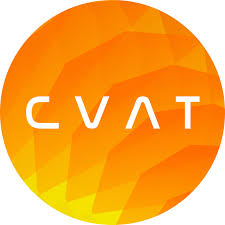
2. CVAT
CVAT (Computer Vision Annotation Tool) is an open-source platform designed for annotating images and videos for machine learning and computer vision tasks. It is used primarily for object detection, segmentation, and tracking. The tool offers a straightforward interface and flexible annotation options, making it a reliable choice for teams managing large-scale image and video datasets.
What makes CVAT stand out is its scalability and support for various annotation formats. It also facilitates team collaboration, which is essential for projects requiring multiple contributors. As an open-source tool, CVAT is free to use and offers customization options, allowing users to adapt it to their specific needs.
Key Features:
- Open-source and customizable
- Supports object detection, segmentation, and tracking
- Team collaboration features for annotation projects
- Compatible with multiple image and video formats
- Integrates with machine learning workflows
Best For:
- AI and machine learning teams working on computer vision tasks
- Projects that require team collaboration on large datasets
- Teams looking for an open-source annotation tool
- Research teams focusing on object detection and segmentation
Contact and Social Media Information:
- Website: www.cvat.ai
- LinkedIn: www.linkedin.com/company/cvat-ai
- Facebook: www.facebook.com/cvat.corp

3. Roboflow
Roboflow is an annotation tool designed to simplify the process of labeling images and preparing them for machine learning. The platform supports tasks like object detection, segmentation, and classification. Roboflow’s interface allows users to quickly annotate images and organize datasets for machine learning applications. It also integrates with popular frameworks like TensorFlow and PyTorch.
Roboflow’s key strength is its ability to handle both small and large-scale datasets, offering a smooth experience for teams working on computer vision tasks. The tool also provides features for automating some aspects of the labeling process, which can save time when working with extensive datasets.
Key Features:
- Supports image annotation for object detection, segmentation, and classification
- Integrates with TensorFlow and PyTorch
- Automation features for faster data labeling
- Scalable for both small and large datasets
- User-friendly interface for easy annotation
Best For:
- AI and machine learning teams working on computer vision projects
- Teams with both small and large datasets
- Projects needing fast and efficient image labeling
- Users looking for a tool that integrates with machine learning frameworks
Contact and Social Media Information:
- Website: roboflow.com
- LinkedIn: www.linkedin.com/company/roboflow-ai
- Twitter: x.com/roboflow
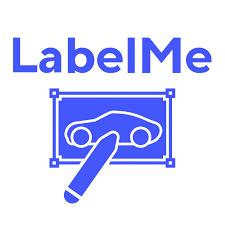
4. LabelMe
LabelMe is an open-source tool developed for annotating images, especially for tasks like object detection and segmentation. It supports annotation types such as bounding boxes, polygons, and lines. LabelMe is known for its simplicity, making it an easy-to-use solution for small to medium-scale annotation projects.
Although LabelMe is a basic tool compared to others, it provides the necessary functionalities for labeling images quickly and accurately. Its open-source nature makes it a free tool for teams working on a budget or those who need a straightforward annotation tool for their computer vision tasks.
Key Features:
- Open-source and free to use
- Supports bounding boxes, polygons, and line annotations
- Simple interface for quick image labeling
- Ideal for object detection and segmentation
- Customizable for different annotation needs
Best For:
- Small to medium-scale image annotation projects
- Teams working on object detection and segmentation
- Users needing a free, open-source tool for annotation tasks
- Researchers or developers who require a simple and effective tool
Contact and Social Media Information:
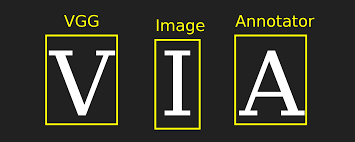
5. VGG Image Annotator (VIA)
VGG Image Annotator (VIA) is a browser-based open-source tool developed by the Visual Geometry Group at the University of Oxford. It supports annotation tasks like object detection and segmentation, and it’s designed to work with both images and videos. VIA does not require installation, making it easy to access directly in the browser and ideal for users needing a simple annotation tool.
VIA is straightforward and functional, offering all the basic features needed for image annotation. While it’s not as feature-rich as some paid tools, its simplicity makes it an effective option for users working on smaller-scale projects or those who need an accessible tool for quick annotations.
Key Features:
- Open-source and browser-based
- Supports object detection and segmentation tasks
- Simple interface for quick and efficient annotation
- No installation required, making it easy to use
- Free to use for anyone
Best For:
- Small-scale image and video annotation projects
- Researchers or students needing a simple tool
- Projects that don’t require advanced annotation features
- Users looking for an open-source tool that runs directly in the browser
Contact and Social Media Information:
- Website: www.robots.ox.ac.uk/~vgg/software/via
- E‑mail: vgg-webmasters@robots.ox.ac.takethisout.uk
- Twitter: x.com/Oxford_VGG

6. Scale AI
Scale AI is a platform that provides scalable data annotation services for machine learning and AI teams. It’s designed for industries like autonomous vehicles, robotics, and content moderation, handling a variety of data types, including images, video, and text. Scale AI uses a combination of human annotators and AI tools to ensure high-quality data labeling.
Scale AI is focused on providing fast and accurate annotation for large datasets. With a strong focus on automation and quality control, the platform helps teams quickly prepare their data for machine learning model training, ensuring that the labeled data is ready for use in a variety of applications.
Key Features:
- Combines human annotators with AI tools for efficient data labeling
- Supports image, video, and text annotation
- Focus on automation for large datasets
- Quality control mechanisms to ensure accuracy
- Integrates seamlessly with machine learning workflows
Best For:
- Teams working with large datasets and requiring quick data labeling
- Industries like autonomous vehicles and robotics
- Projects involving multiple data types (images, videos, text)
- Teams looking for a scalable annotation solution
Contact and Social Media Information:
- Website: scale.com
- LinkedIn: www.linkedin.com/company/scaleai
- Twitter: x.com/scale_ai
- Facebook: www.facebook.com/scaleapi

7. Label Studio
Label Studio is a versatile, open-source data labeling tool that can handle a variety of tasks such as image annotation, text labeling, audio classification, and more. It provides an easy-to-use interface that lets you quickly label your data, making it suitable for teams working on machine learning or artificial intelligence projects. Label Studio supports multiple data formats, making it adaptable to different types of projects, from computer vision to natural language processing.
The flexibility of Label Studio is what stands out the most. It supports different annotation types like bounding boxes, polygons, and keypoints, and it allows you to customize workflows to meet your project’s needs. It’s a free tool, which makes it an attractive option for small businesses, researchers, or anyone on a budget looking to annotate a wide variety of data.
Key Features:
- Open-source and highly customizable
- Supports image, video, audio, and text annotation
- Allows for real-time collaboration among team members
- Flexible annotation types, including bounding boxes, polygons, and keypoints
- Integrates with machine learning workflows
Best For:
- Teams working with different data types (image, text, audio)
- Small businesses or researchers looking for a free, open-source solution
- Projects requiring flexible workflows for diverse annotation tasks
- Machine learning teams needing fast, accurate labeling
Contact and Social Media Information:
- Website: labelstud.io
- LinkedIn: www.linkedin.com/company/heartex
- Twitter: x.com/labelstudiohq

8. MONAI Label
MONAI Label is an open-source tool designed for medical image annotation, part of the MONAI framework focused on AI in healthcare. It’s primarily used for medical imaging tasks such as segmentation, classification, and detection. MONAI Label integrates with popular medical imaging software, making it a valuable tool for healthcare professionals and researchers in the medical field who need to annotate medical images accurately.
What makes MONAI Label unique is its focus on healthcare and its seamless integration with medical imaging tools. This tool is well-suited for teams working with MRI scans, CT scans, and other medical imaging formats. It provides the flexibility to customize annotation tasks and workflows, making it an excellent choice for teams working on medical AI models or healthcare-related research projects.
Key Features:
- Open-source medical image annotation tool
- Supports segmentation, classification, and detection tasks
- Seamlessly integrates with medical imaging software
- Tailored for healthcare and medical research applications
- Customizable workflows for specific medical use cases
Best For:
- Healthcare and medical research teams working with medical imaging
- Projects involving MRI, CT, and other medical image formats
- Teams that need a customizable, open-source tool for medical data labeling
- Organizations integrating AI into medical imaging workflows
Contact and Social Media Information:
- Website: monai.io
- LinkedIn: www.linkedin.com/company/projectmonai
- Twitter: x.com/ProjectMONAI

9. Annotely
Annotely is a flexible and simple tool for annotating images and videos, particularly suited for machine learning teams. It offers features for object detection, segmentation, and classification, making it a solid choice for a variety of computer vision tasks. Annotely’s intuitive interface ensures that users can quickly get up to speed with labeling data, making it a good option for both beginners and experienced teams.
The platform supports multiple annotation types like bounding boxes and polygons and allows for easy exporting of labeled data to machine learning models. With its free offering, Annotely becomes a go-to for teams that need a cost-effective way to annotate their datasets for machine learning projects.
Key Features:
- Simple and intuitive user interface
- Supports bounding boxes, polygons, and segmentation annotations
- Integration with machine learning workflows
- Free to use for smaller projects
- Ideal for object detection and segmentation tasks
Best For:
- Teams working on small to medium-scale machine learning projects
- Users needing a straightforward, easy-to-use annotation tool
- Projects involving object detection and image segmentation
- Those looking for a cost-effective, free annotation solution
Contact and Social Media Information:
- Website: annotely.com
- Twitter: x.com/@annotely

10. RectLabel
RectLabel is an image annotation tool specifically designed for macOS. It supports various annotation types, including bounding boxes, keypoints, and polygons, and is well-suited for machine learning tasks like object detection and image segmentation. RectLabel integrates seamlessly with TensorFlow, making it a good choice for teams that need to quickly prepare annotated data for model training.
RectLabel is designed to be lightweight and easy to use, with a straightforward interface that allows for fast labeling. It’s a solid choice for macOS users working on small or medium-scale annotation projects, and its simple setup makes it a great tool for getting started with data labeling for AI models.
Key Features:
- macOS-compatible annotation tool
- Supports bounding boxes, keypoints, and polygon annotations
- Integration with TensorFlow for model training
- Simple and intuitive user interface
- Lightweight and easy to use
Best For:
- macOS users working on image annotation tasks
- Teams needing a fast and efficient image labeling tool
- AI and machine learning projects focused on object detection
- Users seeking a simple, no-fuss tool for training models
Contact and Social Media Information:
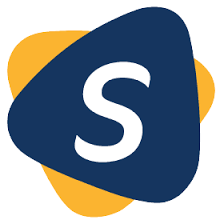
11. Scalabel
Scalabel is an open-source image and video annotation tool that is specifically built for scalable machine learning projects. It supports various annotation types, including bounding boxes, keypoints, and segmentation, making it ideal for computer vision tasks. Scalabel’s collaborative features allow multiple users to work on the same project in real-time, which is essential for teams working with large datasets.
Scalabel also integrates well with machine learning frameworks, making it easy to use for teams who are looking to quickly prepare their labeled data for model training. Its open-source nature ensures that it’s free to use, making it an appealing option for teams and researchers working within a budget.
Key Features:
- Open-source and free to use
- Supports bounding boxes, keypoints, and segmentation annotations
- Real-time collaboration features for team projects
- Integrates with machine learning pipelines
- Scalable for large datasets
Best For:
- Teams working on large-scale machine learning projects
- Collaborative projects requiring team-based annotation
- Researchers or developers looking for a free, open-source tool
- Projects that need fast, scalable annotation solutions
Contact and Social Media Information:

12. SuperAnnotate
SuperAnnotate is a comprehensive annotation tool that supports a wide range of annotation tasks, including object detection, image segmentation, and keypoint annotation. The platform is designed to streamline the data labeling process for teams working on machine learning and computer vision projects. SuperAnnotate offers an intuitive interface, making it easy for users to annotate large datasets efficiently.
One of the standout features of SuperAnnotate is its ability to automate parts of the annotation process using AI-powered tools, significantly reducing the time needed for manual labeling. This makes it a great option for teams working with extensive datasets or tight deadlines. Additionally, SuperAnnotate supports team collaboration, allowing multiple users to work together on the same project, making it perfect for large-scale annotation tasks.
Key Features:
- Supports object detection, segmentation, and keypoint annotation
- AI-assisted tools for faster labeling
- Real-time collaboration features for team-based projects
- Scalable and suitable for both small and large datasets
- Easy-to-use interface with integration capabilities for machine learning
Best For:
- Teams working on computer vision and AI projects
- Large-scale annotation projects with team collaboration
- Teams needing AI-assisted tools to speed up the annotation process
- Projects requiring a flexible, user-friendly annotation platform
Contact and Social Media Information:
- Website: www.superannotate.com
- LinkedIn: www.linkedin.com/company/superannotate
- Twitter: x.com/superannotate
- Facebook: www.facebook.com/superannotate
Conclusion
Selecting the right annotation tool is crucial for streamlining the process of labeling data for machine learning and AI projects. The right tool can significantly improve the efficiency of data preparation and ensure the accuracy of the labeled data. Whether working with simple image labeling or complex tasks like object detection and segmentation, having the right tool in place is essential.
From tools that cater to small-scale projects to those designed for large datasets and team collaboration, the best annotation tools offer flexibility, ease of use, and integration with machine learning workflows. By choosing the right tool for your project, you can save time, enhance collaboration, and focus more on developing and training your AI models.
